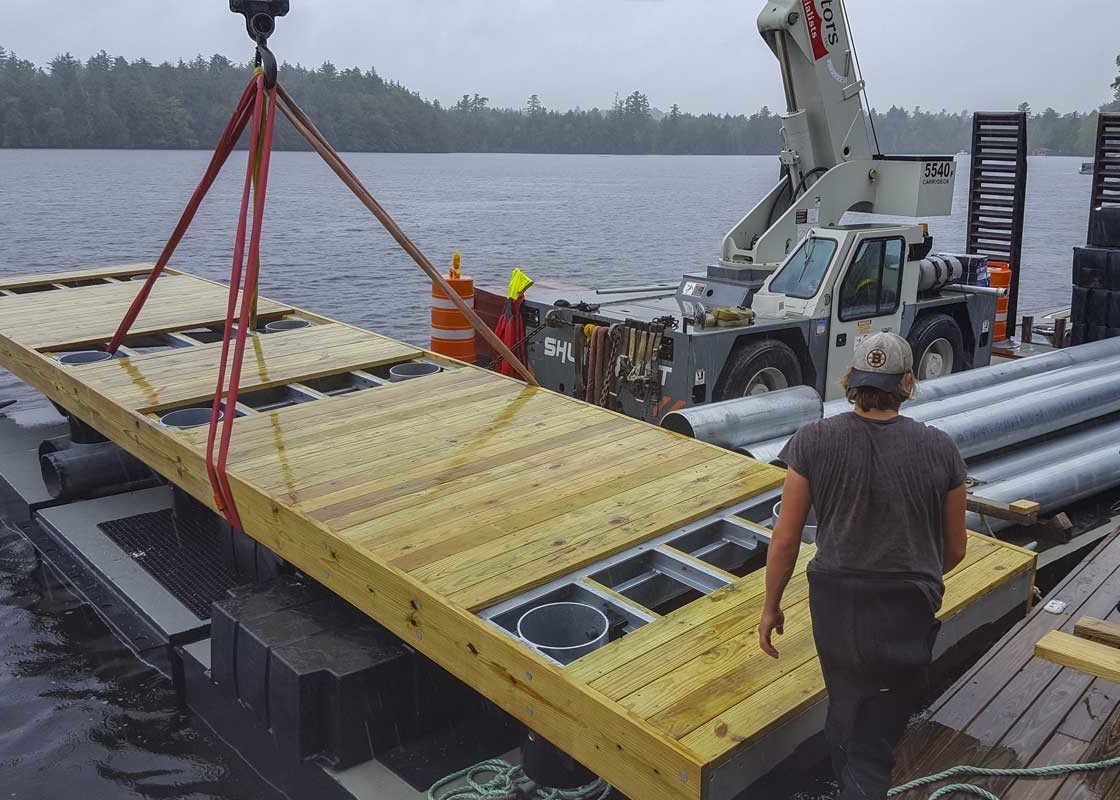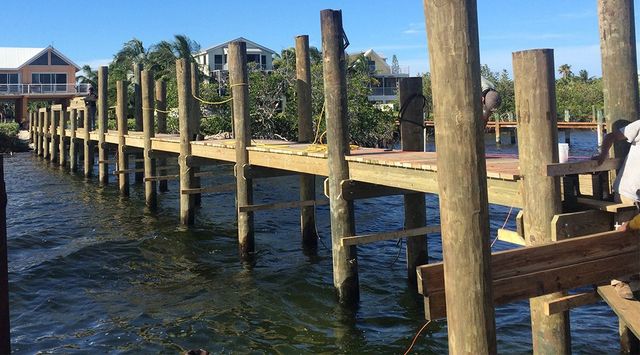How to Choose the Right Solution for Your Dock Repairs
How to Choose the Right Solution for Your Dock Repairs
Blog Article
Effective Dock Repair Techniques: Ensuring Architectural Honesty
Ensuring the architectural honesty of anchors with efficient repair service methods is extremely important for the durability and safety and security of aquatic centers. This includes a multi-faceted method starting with comprehensive examinations making use of innovative innovations like sonar equipment and from another location ran cars (ROVs) to discover both visible and hid damages. Ultimately, picking the ideal repair work products, such as corrosion-resistant alloys and composite products, is vital for durability. Architectural reinforcement methods, consisting of the implementation of cross-bracing systems and load-distribution plates, play a vital function in mitigating tension factors. Nevertheless, the importance of these strategies ends up being evident when discovering advanced fixing techniques and preventative upkeep techniques.
Assessing Dock Damage
Analyzing dock damage is an important primary step in making certain the structural stability and safety and security of any docking facility. This preliminary examination entails a comprehensive evaluation to determine both noticeable and surprise damages. Secret elements to check out consist of the dock's structure, pilings, outdoor decking, and hardware. Each part must be scrutinized for indications of wear, rot, rust, or other types of deterioration that might jeopardize the architectural stability.
Architectural designers or qualified examiners normally perform these analyses utilizing specialized methods and devices. For circumstances, underwater evaluations could utilize sonar tools or remotely operated vehicles (ROVs) to discover submerged damage. Above water, aesthetic assessments are complemented by utilizing moisture meters and various other diagnostic devices to discover underlying issues not immediately noticeable to the naked eye.

Deciding On Repair Materials
Selecting the suitable repair service materials is a pivotal action in the dock reconstruction process, one that directly affects the long life and efficiency of the fixed framework. Product option must be driven by elements such as environmental conditions, load-bearing demands, and compatibility with existing dock elements. Timber is a standard option for anchors due to its all-natural durability and visual charm. Selecting the right kind of timber, such as pressure-treated lumber or naturally rot-resistant species like cedar or teak wood, is important to stand up to marine settings.
In addition to wood, composite products are increasingly popular as a result of their toughness and low upkeep demands. Composites, generally made from a mix of plastic and timber fibers, provide superb resistance to rot, bugs, and UV damage. For steel docks, picking corrosion-resistant alloys such as galvanized steel or marine-grade aluminum is vital to stop rust and make sure structural stability in saline water problems.
Epoxy materials and marine-grade sealers are vital for fixing cracks and sealing joints, giving a waterproof barrier and improving the dock's total stamina. By thoroughly picking top quality products, dock fixings can achieve lasting results, consequently guarding against future degradation and making sure secure, reliable use.
Structural Reinforcement Methods
Reliable architectural support strategies are essential in making certain the security and durability of dock repair work. This method is specifically reliable for anchors subjected to heavy loads or harsh ecological problems.
One more vital technique is the application of fiber-reinforced polymers (FRP) These products provide high strength-to-weight ratios and excellent resistance to deterioration, making them suitable for strengthening wooden or concrete anchors. FRP can be applied in sheets or strips and adhered with epoxy resins to boost architectural stability.
Supporting and securing systems also play an important role in other architectural reinforcement. Cross-bracing, using steel or wooden beam of lights, can combat side pressures, decreasing swaying and motion. Anchoring systems, such as helical piers or driven heaps, offer a secure structure by transferring tons to deeper, a lot more stable dirt layers.
Lastly, the assimilation of load-distribution plates can help disperse weight a lot more evenly across the dock's surface area, alleviating localized anxiety factors. These strategies collectively guarantee that anchors stay durable and safe, efficient in enduring the roughness of their operational atmosphere.
Advanced Fixing Techniques

Another advanced technique involves underwater welding, which permits repairs to be conducted without the need to dewater the area. This method is particularly advantageous for addressing structural concerns in immersed dock parts, making sure marginal interruption to operations. Improved welding techniques, coupled with robotic systems, supply accuracy and dependability, consequently prolonging the lifespan of the dock.
Additionally, cathodic defense systems are applied to stop rust in metallic dock frameworks. By utilizing sacrificial anodes or amazed current systems, these strategies properly alleviate the electrochemical processes that lead to product degeneration.
Lastly, progressed tracking technologies, such as architectural health and wellness monitoring (SHM) systems, give real-time data on the condition of dock frameworks. These systems allow proactive upkeep and timely treatments, eventually ensuring the lasting architectural honesty of the dock.
Maintenance and Avoidance
Maintenance and avoidance are essential principles that underpin the durability and safety and security of dock structures. Regular assessments are critical, permitting early discovery of deterioration, possible weaknesses, and ecological impacts. An aggressive method, entailing routine checks for deterioration, rot, and structural changes, reduces costly repairs and extends the dock's operational life.
Safety nets ought to website here include using safety finishings to metal components to defend against corrosion and making use of treated wood to withstand degeneration. Additionally, guaranteeing correct drainage and ventilation can protect against water accumulation, which is a typical root cause of architectural degradation. Integrating high quality products and sticking to supplier guidelines during building and fixing phases also play essential roles in improving sturdiness.

Educating workers in dock maintenance best practices makes certain regular application of safety nets. Leveraging technical breakthroughs, such as drones for assessments and sensors for real-time monitoring, can further boost upkeep initiatives. By focusing on maintenance and avoidance, dock proprietors can guarantee architectural stability, operational safety and security, and economical administration over the dock's lifespan.
Verdict
To conclude, maintaining the architectural stability of aquatic facilities necessitates detailed dock repair work methods. Extensive inspections making use of advanced devices uncover both noticeable and concealed problems, while the selection of proper repair products enhances toughness. Implementing architectural reinforcement techniques addresses stress points successfully. Advanced fixing methods, paired with normal upkeep practices, ensure the dock stays secure and functional under diverse environmental problems. Embracing these methods substantially lengthens the lifespan and performance of aquatic facilities.
Making certain the structural honesty of docks with reliable repair work strategies is critical for the longevity and safety and security of aquatic facilities.Choosing the suitable repair materials is a crucial step in the dock repair procedure, one that directly influences the long life and efficiency of the repaired structure.Reliable architectural support strategies are important in making sure the stability and long life of dock repair work. By prioritizing upkeep and avoidance, dock owners can make sure architectural honesty, functional safety and security, and cost-efficient monitoring over the dock's life expectancy.
In verdict, keeping the structural integrity of aquatic centers requires extensive dock repair strategies.
Report this page